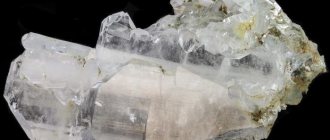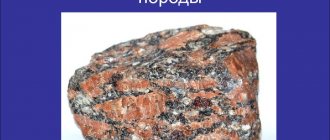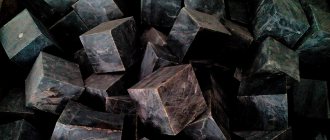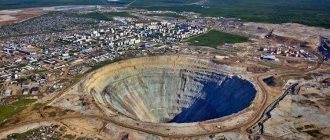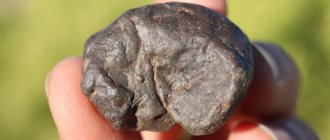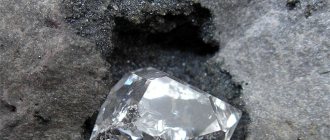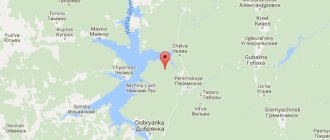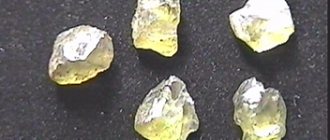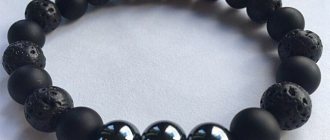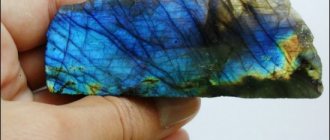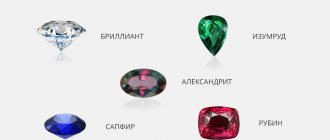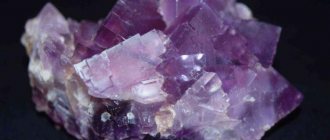The olivine belt of the planet became known in our time thanks to the science fiction novel “The Hyperboloid of Engineer Garin.” The “Gold Rush”, the scientific and technological revolution of the early 20th century and the aggravated social problems of that time - everything was mixed up in this literary work of A. N. Tolstoy. Before starting work, the writer consulted with scientists. However, does the olivine belt really exist or is it just a metaphor?
Olivine is a component of the belt, has a natural green color and looks like an emerald. But unlike it, the stone costs an order of magnitude cheaper. At the same time, it has a bright shine and high refractive indexes of light. For this reason, the mineral is very popular among jewelry lovers around the world. His beauty earned him fame and praise among poets. Often there is a name such as “evening emerald” or “golden stone”. In addition to the green tint, olivine has lemon and honey tones.
You will learn more about this precious stone, the conditions for the emergence of the olivine belt and its development by reading this article.
What is olivine?
Olivine is a mineral consisting of iron and magnesium silicates. It is called the building material of the Universe, as it is widespread in nature. In the bowels of the Earth, it consists of rocks formed as a result of the solidification of molten magma. Olivine is formed at high temperatures (about 1600 °C). In the planet's mantle, located between the earth's crust and the hot core, its content predominates compared to other minerals.
It received its sonorous and beautiful name due to its yellow-green color, reminiscent of the color of olives. However, in nature there are other varieties of it - dark and transparent.
Olivine is an unstable material. As a result of natural processes, it turns into other rocks - serpentine, xenolith, talc, chlorite, majorite garnet.
At the beginning of the last century, the study of the deep substance of the planet began with the help of seismic waves. Earthquakes and explosions cause shaking of the earth's surface, which is transmitted in the form of mechanical vibrations across the entire planet, to its very center. These vibrations have similar properties to sound waves. It is known that the frequency and direction of sound waves changes as it passes through different media and materials. Underground waves also undergo certain changes, which was established in 1885 by one of the first seismologists, J. Rayleigh. But his discovery did not cause a reaction in the scientific world and remained unexplained. Only new research, which began in 1911, showed that our planet is heterogeneous inside. If it consisted of a material of the same density, then along its entire length it would serve as a good conductor of mechanical vibrations, the characteristics of which would also be uniform.
The rock-forming mineral olivine usually has a yellow-green color, that is, olive, which is how it got its name. However, dark and transparent varieties of olivine are known.
However, underground waves change speed, direction of movement and other characteristics, which means that along their path they encounter conductors with different properties. The planet is heterogeneous in its internal composition; it has a complex structure. However, it would be logical to believe that the density of the rocks that make up the body of the Earth should increase with depth, since the pressure of matter also increases in these zones. But the increase in density does not occur uniformly, but spasmodically. The most significant jumps were noted in 1909 and 1914 at depths of 30 km and 2900 km. This indicates the differentiation of matter in the interior of the planet. By the early 1930s, geophysicists had built a schematic model of the structure of the Earth, which indicated all the main deep layers of the earth's substance. The outer layer is the earth's crust. It ranges in thickness from 5 to 30 km, reaching its greatest thickness beneath the continents. The crust is composed mainly of granites, which in some places are interlayered with sedimentary deposits - such as clays, sands, carbonate rocks. Next comes a layer formed by heavier substances, mainly metals. Being under great pressure, they are molten and have a huge temperature. The upper part of this layer is represented by slag thrown to the surface during volcanic eruptions in the form of lava flows. Olivine, the predominant mineral, lies even deeper. This is the Olivine Belt zone.
The internal structure of the planet assumed at the beginning of the 20th century. In the center there is a super-dense core. It is surrounded by layers of liquid matter. The topmost of them is the Olivine Belt.
Its upper part is rich in ferrous compounds that make up meteorites. This similarity is explained by the common origin of the Earth and meteorite matter, since both our planet and the rest of the cosmic bodies of the Solar System were formed according to the theory of O.Yu. Schmidt, from the primary gas-dust nebula, and therefore have a single chemical composition (or rather, a common set of chemical elements). A large amount of gold is concentrated in the lower part of the Olive Belt. The Olivine Belt is separated by a liquid layer from the dense solid core located in the center of the Earth. Later, geologists and geophysicists proved that the Earth’s chemical composition is indeed close to iron meteorites. It consists of 35% iron. By examining lavas and deep inclusions in rocks (nodules) that make up the lower levels of the earth's crust, scientists were convinced of the presence of significant accumulations of olivine underneath it.
This hypothesis seemed very convincing to many. Fantastic A.N. Tolstoy even wrote how one can get to the coveted belt using a light beam, and thereby gave an accurate description of the then prevailing views on the internal structure of the planet.
Moreover, new facts have shown that olivine is there in a molten state. Probing the interior of the globe with seismic waves made it possible to accurately determine the density of all its main internal layers, often collectively called underground geospheres, that is, geophysical shells. Based on the density and calculations of the distribution of chemical elements on Earth, scientists have roughly figured out what elements and substances make up this or that layer. The inner, solid part of the earth's core is formed, apparently, by iron and nickel. Its outer, liquid part is composed of iron and oxides of sulfur and silicon, as recent discoveries have shown. The core density reaches a value of about 11-12 t/m2.
The thickness of the earth's crust is 30 km under the continents and 4-5 km under the oceans. The mantle is 2700 km long. The thickness of the core, distinguished into outer and inner, is 3470 km.
Gold has a much higher density - 19.3 t/sq.m. m2! Consequently, if it is present inside the globe, then during the separation of matter by density it should concentrate in the depths of the planet in fair quantities. You should look for it in the unattainable Olivine Belt. And suddenly, completely unexpectedly, the search for the belt stopped. It was as if they had forgotten about gold. The reason for this was the new discoveries of geophysicists, which showed that there is no Olivine belt in the bowels of the Earth and never has been. Its absence is indicated by the previously mentioned theory of the origin of planets from a gas-dust cloud. About 5 billion years ago, accretion processes, that is, the sticking together of dust particles, began to occur in this nebula surrounding the primary Sun. This is how the formation of dense and hot, but unstable planetary embryos, called planetesimals, took place. Initially, as a result of random accretion, all the chemical elements that made up the Earth's planetesimal were mixed together. But since the embryo of our planet had gravity, under the influence of gravity, elements with heavier mass rushed to the center of the Earth, displacing light elements. There was differentiation of the substance by density. By the way, this process is not completed to this day, although in our era it is no longer as active as before. Some researchers, not unreasonably, believe that as soon as the separation of elements in the depths ends, the movement of mantle matter will immediately stop, and there will be no more earthquakes or volcanic eruptions in the world. This is expected to happen in 2 billion years.
We are given an idea of the chemical composition of the mantle by its inclusions in basalts, called nodules. They contain chrome spinels, chrome diopside and olivine.
As the elements separated, iron rushed to the center of the Earth, thereby forming a massive (heavy) core. The earth's crust arose at the site of the accumulation of light fractions - silicon, oxygen and aluminum, which is why it received the designation of the sialytic layer in geochemistry (from the words silicium, i.e. silicon and aluminum). As for the mantle, it is composed of dense silicates, which contain a lot of magnesium, which is why it is designated in geochemistry as “sima” (from the words silicium and magnesium). The density of the planet's inner layers has been measured with relatively high accuracy. Based on these data, one can judge their composition. Scientists identify several additional layers in the mantle, but the Olivine Belt is not among them. In total, the mantle has three main layers - the upper, middle and lower mantle. At the same time, in the upper mantle there is a layer adjacent to the earth’s crust and forming with it the lithosphere, as well as a layer of especially fluid substance - the asthenosphere. Despite the high density of the substance, it contains a relatively small amount of heavy metals. Among them, of course, there is gold, but it does not form a continuous layer.
Gold is widely distributed throughout the world. It was even discovered on the Sun, which is composed predominantly of light elements - hydrogen and helium. The amount of “solar” gold is approximately 100 billion tons.
Scientists do not yet know how gold is distributed in the mantle and in what quantities it is concentrated there. The mystery of the noble metal remains, although science has refuted the existence of the magic belt.
Green beaches and meteorites
There are several unique olivine beaches on Earth, dotted with small green pebbles. Among them are the colorful beaches on the Hawaiian Islands, consisting of different rocks of volcanic origin, which over time have been crushed by the surf. The olivine beach of Papakolea was formed as a result of the collapsed slope of a volcano. Even the water in this place has a greenish tint, as it is saturated with mineral particles. At sunset, olivine stones resemble emeralds, and local authorities have banned their export to preserve the unique beauty of this place.
The main “supplier” of the mineral on such beaches are active or extinct volcanoes, which are slowly collapsing under the influence of the atmosphere. Olivine is found not only on Earth, but also on other planets and space objects. Scientists have found several large meteorites consisting of an alloy of olivine and native iron. This mineral is also the most common in lunar soil. Its content is 39% in samples of our planet’s satellite.
Pallas iron
This concept is interconnected with meteorites, the study of which began in our country in the mid-eighteenth century. In 1749, in Siberia, and specifically in the Krasnoyarsk Territory, a stone was found that attracted attention. His weight was 687 kilograms, but he was still taken to the capital and studied. Twenty years after its discovery, the Russian scientist Pallas gave it characteristics and called it ancient iron of extraterrestrial origin. After this, all such objects are called pallasites, and Russia became the pioneer of the science of meteorics. The name was given to it, as you understand, in connection with the scientist who studied it.
In the twentieth century, very famous specimens were isolated and even given names.
Fukan. It was found in the twenty-first century, and it is assumed that it fell to Earth almost five billion years ago. It is practically the same age as our planet. Its structure includes a large number of huge olivines.
Seytchan. It contains nickel iron and a large number of olivine inclusions. It was also found in Russia in the Magadan region by the Russian geologist Mednikov. It was described as an iron meteorite.
How to distinguish pallasite from ordinary stone? Firstly, this is the color: gray, black-brown, bluish with yellow-green specks. Mainly composed of nickel-iron structure. Sometimes they are found with diamond inserts; they are considered the most significant and valuable. It should be noted that not every meteorite is a pallasite.
Pallasite is used in jewelry and as a valuable gift. Moreover, it does not require maintenance, a separate storage place and constant care, in which it is not whimsical.
There is information that it has magical properties. Most often it is used in rituals, as it is filled with the energy of the Universe. He is also credited with the ability to attract good luck in all matters, including business.
A variety of gift figurines are often made from this material. According to tradition, if you give something like this to newlyweds, you will ensure their life in peace, comfort and tranquility. They are also practiced as a gift for anniversaries and other anniversaries. It is the gift of olivine that is valued a hundred times than that which was purchased independently. Gifting jewelry to an unmarried girl will help her find long-awaited female happiness. If a man gives it to his woman, the latter will become even more caring and loving. This mineral also protects a person and home from envious people and the evil eye. You need to know that the stone loves only one hand and under no circumstances should you give the mineral given to you to another person, otherwise hardships and failures will follow.
The structure of the Earth according to the assumptions of scientists of the early 20th century
The hypothesis about the planet's olivine belt arose in the early 30s. XX century. During these years, scientists formulated a model of the deep structure of the Earth, consisting of several layers. The diagram developed at that time makes it possible to understand that this is the Earth’s olivine belt:
- The outer layer of the earth's substance is the crust, up to 30 km thick, the most massive under the continents. It consists mainly of granites and sedimentary rocks
- Under the bark there is a layer, the bulk of which consists of metals that are in a molten state and under high pressure. Sometimes they are thrown to the surface of the Earth during volcanic eruptions.
- The third layer contains the olivine belt, which consists mainly of olivine. And in its lower part, as scientists assumed, a huge amount of precious metal – gold – is concentrated. The olivine belt separates the dense core of the Earth from the liquid layer.
This was the prototype model that formed the basis of modern geophysical science. It seemed very convincing, since studies of the lava confirmed the content of large amounts of olivine. Later, using seismic sounding, it was proven that the mineral is actually in a molten state in the depths. However, scientists were still wrong about some things.
Olivine from Space
Pallasites are found in all countries of the world, but a stony-iron meteorite was observed in only three cases. The first fall occurred at the beginning of the nineteenth century in Sicily, then at the end of the nineteenth in Japan. And the third was observed before the eyes of the Finns in the Marjalahti region. But still, the bulk of all pallasites were brought to our planet in the very distant past. In the United States of America, a meteorite containing olivine was found in the state of Kansas. At the moment, humanity has about twenty objects of cosmic origin in its hands with a total mass of almost five tons. If you take it apart piece by piece, one of them weighs almost five hundred kilograms and is kept in the Museum in Chicago. Already at the beginning of the twenty-first century, search engines Steve Arnold and Phil Money decided to explore this area again and discovered several more fragments of the same nature and structure in the ground. A similar one and a half ton block of Pallas iron was found on a working cattle pasture in the northern part of Australia. Weighing about a ton, meteorites were discovered in the Atacama Desert in Chile. A Chinese peasant made an interesting discovery when he was cultivating his field of rice. While cultivating the soil, a man extracted a huge block of pallasite. Belarusians were also delighted with the discovery, weighing about three hundred kilograms, and stored at a depth of three meters. Also, similar finds were made in Antarctica at different periods of time.
Olivine belt of the planet - what is it?
This concept came to the general public thanks to A. N. Tolstoy’s science fiction novel “The Hyperboloid of Engineer Garin,” which was created in 1927. Even in his sketches, the writer painted a futuristic picture: with the help of a light beam of enormous power, scientists drill into the earth's surface and reach a boiling hellish mixture consisting of olivine and gold.
The idea for the novel did not come out of nowhere - an acquaintance of the writer told him about an engineer who actually built such a device. But by design it was a paraboloid, not a hyperboloid. This scientist subsequently died in 1918 in Siberia, burying the secret of the invention with him. The inaccuracy in terms did not detract from the interest in the adventurous idea of gold mining, especially since, according to the description in the novel, the olivine layer did not lie so deep - 5 km from the surface of the Earth.
Olivine beaches on the planet
In addition to the beaches already listed, there are several more olivine beaches. In Micronesia, which is located in the western Pacific Ocean, the coast of the island of Guam has an olivine coast. This island is an integral part of the Mariana archipelago, this is the one that is located near the world famous and deepest depression on the earth's surface - Mariana (about 11 kilometers). This coastline consists not only of olivine, but also of snow-white and orange-colored sandstone. It is also possible to observe green beaches on the famous Galapagos Islands, which belong to Ecuador. They also border the Pacific Ocean near South America. There are reserves of metal supplied by active volcanoes. And there is another olivine belt on the planet, but not so famous in terms of attendance, in Europe, or more precisely in Norway. It is adjacent to the Arctic Ocean; cold waters naturally scare away lovers of a beautiful holiday.
Engineer Garin - an enriched evil genius
In the novel by A. N. Tolstoy, Russian engineer Pyotr Garin manages to create a hyperboloid that emits a beam of enormous thermal power that can destroy any substance in its path. Thanks to the infernal machine, a brilliant scientist began mining gold on a remote island in the Pacific Ocean. An American billionaire was involved in the project, whose competitors were also destroyed with the help of a hyperboloid.
The extraction of gold from the olivine belt by engineer Garin led to the undermining of the foundations of the world economy and a severe financial crisis. An evil genius buys up the entire US industry and proclaims himself a dictator. On the way to world domination, Garin sets up and uses other people to carry out his selfish plans. However, his tyranny does not last long, and the hyperboloid is captured by a group of revolutionaries. Later, a general uprising of workers unfolds.
Why did the hypothesis become so popular?
The idea of world domination and easy enrichment has existed at all times. Tolstoy's novel was a sign of the era in which the writer lived. At the beginning of the 20th century, a kind of “explosion” of technical thought occurred, and new types of weapons of mass destruction were developed. Tolstoy reworked the chapters of the novel several times, and the last, fourth part, was finally completed in 1939, before the outbreak of World War II.
An interesting fact is that he was inspired to create this work by the Shukhov Tower, better known as the Shabolovskaya Television Tower. It was erected in 1920-1922. and during its construction, for the first time in the world, hyperboloid metal structures were used. The grandiose creation of human hands delighted contemporaries and at the same time instilled fear of the possible negative role of technical discoveries.
How much does space pallasite cost?
The question of the cost of pallasites is quite interesting. An interesting fact is that an ordinary inconspicuous stone lying under your feet can become more expensive than gold. A meteorite is a rather valuable gift and many lovers of valuables want to see it in their collection. There is a special demand for rare types of pallasites; the price for such specimens can reach up to 40 thousand dollars per kilogram.
Particularly prized are polished sections of blue metal with frequent inserts of yellow-green olivine; this is very reminiscent of stained glass drawings. Although there are other quite interesting options, for example those meteorites that reached our planet after arriving from Mars or the Moon. They are valued at up to 10 thousand dollars, but not per kilogram, but per gram or five carats. A large gem can be valued at this price.
But you need to be careful, because there are always unscrupulous people who strive to counterfeit this stone. Very often there is a substitution for colored glass or plastic. Sri Lanka is considered the center of counterfeiting.
How to spot a fake?
- If you pick it up and feel that the stone heats up after a while, this indicates that this is a fake.
- If you play with light, double refraction will occur.
- The shine of a real stone has a greasy or oily appearance.
- Real stone will not be scratched by sharp objects.
- Large options and low cost should arouse suspicion. It is better to purchase stones from well-known jewelry workshops.
Olivine Belt: Fact or Fiction?
As modern scientific research shows, olivine is actually a very common mineral. The igneous rocks on which the Earth’s firmament rests consist precisely of it, which is why geologists call it rock-forming. However, there is no gold underneath.
The idea of the olivine belt was caused by artistic necessity, allowing one person, who had mastered a unique technology, to enslave the entire world. Therefore, this concept can only be considered as a literary device.
What's actually in the depths of the Earth?
Beneath the earth's crust is the mantle, which surrounds the planet's core. It became isolated during the long evolution of the Earth over 4.5 billion years. Its thickness is about 3000 km. The mantle accounts for 2/3 of the mass of the entire planet, and it consists of heavy minerals, including mainly iron and magnesium. Other common chemical elements include oxygen, silicon, aluminum, calcium, sodium, potassium and their oxides.
The structure of the mantle is divided into 3 layers. The upper one is involved in the movement of lithospheric plates. The middle one has an amorphous structure, consists of plastic matter and is the main source of volcanic magma. The bottom layer is rich in nickel and iron. This structure has not yet been sufficiently studied. It is possible that between it and the core there is another layer, characterized by high temperature and heterogeneity of the substance.
Olivine sand will cleanse the air of carbon dioxide
Scientists from Project Vesta believe that their special green sand can slow down climate change by removing carbon dioxide from the air on beaches. What is this strange material and how can it be useful to the world? I'll tell you the details.
Idea
Project Vesta was founded in 2022 in San Francisco at the Climitigation Science Center.
The startup's goal was to create a technology that could effectively remove carbon dioxide from the atmosphere, since simply reducing CO₂ emissions is not very effective. The project participants knew that nature had a way of doing this that had been working for billions of years - with the help of volcanic rocks. When rain falls on these rocks and washes them into the ocean, a reaction occurs that pulls carbon dioxide out of the air and “hides” it in the limestone on the ocean floor. The idea of "carbonation", that is, the transfer of excess carbon dioxide into rocks and minerals, is itself a huge field for scientific research. “Why not develop this topic?” — thought Project Vesta. And after numerous experiments, we settled on using olivine, crushed to the state of sand.
Olivine is a mineral of igneous origin, widespread not only in the depths of the earth’s crust, but also in its mantle. On Earth, it is often found inside volcanic bombs, as inclusions in basaltic lava and in iron-stone meteorites. When a volcano is destroyed by the sea surf, beaches of green olivine sand are sometimes formed.
When waves wash over olivine, a small chemical reaction occurs called “olivine weathering,” which pulls some carbon dioxide, CO₂, out of the air. A byproduct of the reaction is bicarbonate HCO₃, which serves to reduce and regulate the acidity of both the human body and the ocean.
The bicarbonate is washed into the ocean, where marine organisms digest it and convert it into stable, solid calcium carbonate, which makes up their shells and skeletons, as well as coral structures. When corals and shellfish die, their remains settle to the ocean floor and form layers of limestone and similar rocks. The carbon remains locked away for millions or hundreds of millions of years until it is released again by volcanic activity. Because coccolithophores (plankton) are “carbon fixers” that remove carbon dioxide from the environment, scientists have proposed using them to solve problems of global emissions and climate change.
Project Vesta
This natural mechanism eliminates approximately half a billion tons of carbon dioxide per year.
The problem is that society consistently produces more than 35 billion tons per year. So the big question is: is there a way to radically speed up and expand this process? Numerous studies have theoretically proven that the process works, but until now no one has tried it on beaches. “We studied all the materials accumulated over 30 years of scientific research, including a lot of theoretical work and laboratory experiments”
“says Tom Green, executive director of Project Vesta.
After collecting all the information about olivine weathering and studying all the research on CO₂ capture and other reactions that could help them in their work, scientists began working on a more effective way to combat climate change. They set themselves the goal of improving the technology created by nature, increasing its speed. And for this they decided to use crushed olivine, scattering it on the beaches.
The logic here is simple. Adding more HCO₃ can increase the production of harmless shells and other limestone and calcium elements. Grinding olivine into sand creates more surface area to accelerate the absorption of CO₂.
For the sake of objectivity, I note that the idea of using CO₂ removal processes is not new. A paper published 30 years ago proposed using silicates to capture carbon dioxide. Five years later, Exxon researcher Harun Kheshgi proposed using quicklime for the same purpose, and that same year, Klaus Lackner, an expert in carbon removal, studied many types of rock in detail.
But these ideas are complex in themselves, and were not cheap. And sand made from olivine, according to Project Vesta calculations, will be an order of magnitude more effective at low costs. Somewhere on the order of $10 per ton of carbon dioxide if their technology is used on a large scale.
Project Vesta has unveiled plans to conduct a pilot study in the Caribbean in the near future. This followed shortly after Stripe's announcement that it would pay the startup to remove 3,333 tons of carbon dioxide at $75 per ton as part of its commitment to spend at least $1 million annually on emissions projects.
Work will be carried out on two beaches. During the study, one beach will be covered with olivine sand, while the second beach will be left in its normal condition as a control sample. The preliminary phase will also address some of the scientific unknowns that relate to coastal areas with increased levels of weathering.
The experiment will likely last a year or two. Ultimately, the team hopes to have data that demonstrates how fast and efficient the process is. The results obtained can be used to refine scientific models.
Problems and possible consequences
When exploring a startup idea, a lot of questions arise. The most obvious one is: “When you mine, crush, ship and spread massive amounts of olivine on the beaches, aren’t you producing more emissions than the mineral can pull out of the air?” Representatives of Project Vesta assure that the benefits outweigh. Research and laboratory modeling have shown that the waves will significantly speed up the breakdown of olivine. And one paper concluded that implementing this project in 2% of “the world’s most energetic shelf seas” could offset all annual human emissions.
But the main problem is that the materials must be carefully polished so that the chemical processes take years, not decades. Some researchers have calculated that the grinding process is so expensive and energy-intensive that the entire approach seems unviable. However, others conclude that olivine sand will remove significantly more carbon dioxide than it produces.
There is also a question about the final outcome of Project Vesta’s work. It's difficult to predict whether waves will help speed up the process of removing CO₂, how well carbon dioxide uptake can be measured and tested, or how easily the public will accept the idea of scattering green minerals along the seashore.
Another area of concern that needs to be closely monitored is possible environmental side effects. The minerals are essentially a geological antacid, so they should reduce ocean acidification at least at very local levels, which could benefit some sensitive coastal species. But olivine can also contain trace amounts of iron, silicate and other materials that can stimulate the growth of some types of algae and phytoplankton, and otherwise alter ecosystems and food chains in ways that are difficult to predict.
Scientists are concerned about the environmental problems that could arise from the mineral spreading to beaches where it was not previously found. Some critics believe that olivine can release heavy metals such as nickel. However, Project Vesta reassures skeptics that the nickel released into the water is not bioavailable, meaning it should not affect marine species.
Competitors
The project has some advantages over other approaches for CO₂ removal.
Firstly, the cost. Second, the main alternative, reforestation, will not necessarily reduce carbon dioxide, since forests often burn and trees are cut down. And in the case of Project Vesta, the ocean takes on the main work. It also seems necessary to me to mention other projects that are developing in the same direction. Researchers in Iceland funnel a solution of carbon dioxide captured by power plants or special machines into basalt formations deep underground, where volcanic rock covers it with stable carbonate minerals. The Leverhulme Center is conducting field trials to evaluate whether basalt rock dust added to corn and soybean fields can act as a fertilizer and carbon dioxide sequester.
And scientists from the University of British Columbia, along with colleagues from other universities in Canada and Australia, are studying various options for using minerals mined as a by-product of the mining of nickel, diamonds and platinum. The idea is to simply scatter them across the field, add water and work them into a slurry. They expect so-called mine tailings ponds to quickly pull and mineralize carbon dioxide from the air, forming a durable block that can be buried. Their models show that this could eliminate the carbon footprint of mines.
But there are still treasures
In modern geology, rocks saturated with olivine are a sure sign of the presence of deposits of diamonds, platinum, chromium, titanium and nickel. These minerals are no less valuable than the gold described in the science fiction novel by A. N. Tolstoy.
Thus, one of the largest diamond deposits in the world is the Argyle deposits in Australia. They consist of rocks of volcanic origin - olivine tuffs. The presence of magnesium and iron silicate minerals, coming from the metaphorical olivine belt, indicates a high content of precious diamonds.
